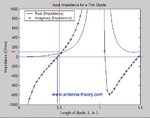kavea
Junior Member level 3
Hi guys,
Can someone tell me why at the resonance current and voltage distributions are shifted by 90deg from each other, while input impedance is purely real which means I and U in phase ?
Can someone tell me why at the resonance current and voltage distributions are shifted by 90deg from each other, while input impedance is purely real which means I and U in phase ?

![2014-05-13 20_06_36-Main [V5.8.14] (F2).png 2014-05-13 20_06_36-Main [V5.8.14] (F2).png](https://www.edaboard.com/data/attachments/43/43423-7b63e60d4c5caa45edc8b4e88a37ab82.jpg)